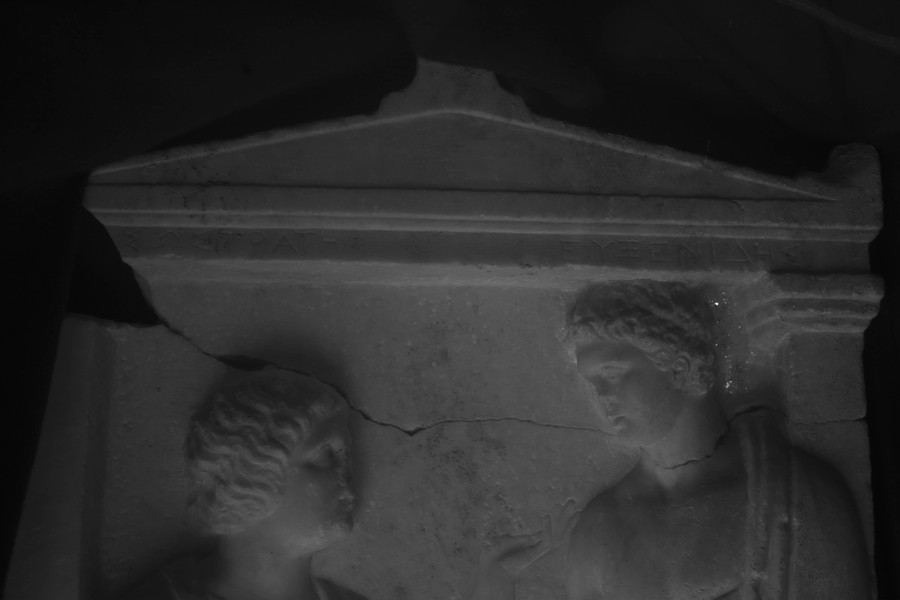Grave relief
Summary
The relief is made of white marble – probably Pentelic. The left-hand acroterion and ante capital are broken off, the break continues over the head of the sitting person, and through the neck of the standing figure. The lower corners are worn. The relief has been examined with Visible Induced Luminescence: the upper part reveals luminescence from Egyptian blue pigments separately and arranged in groups on the background behind the head of the standing figure.
In 1954 all the reconstruction done in plaster was removed, the relief was washed and cleaned and given a new plinth.
Description of object
In a naiskos crowned by a pediment with acroteria two young people are shown greeting each other. A narrow, recessed moulding leads to the architrave which bears an inscription.
Choice of methods
Visual examination
- Macroscopic
Technical imaging
- VIL
Technical imaging
VIL: The Egyptian blue pigments were detected as individual luminescent particles and gathered in groups on the background behind the head of the standing figure.
Bibliography
F. Poulsen 1951, Catalogue of Ancient Sculpture in the Ny Carlsberg Glyptotek, Copenhagen, cat. No. 207.
M. Moltesen 1995, Catalogue. Greece in the Classical Period. Ny Carlsberg Glyptotek, Copenhagen, cat. No. 46.
- IN 1695
- Relief
- c. 330 B.C.E.
- Classical
- White marble -probably Pentelic?
- Bought in Munich in 1899.
- H. 104; W. 60 cm.; D. 12 cm.


